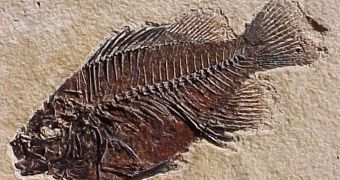Analyzing fossils can yield a variety of clues about things that happened hundreds of millions of years ago, and about the origins and evolution of life itself. But actually studying the remnants is a very delicate process, due to their frailty. A new technique now eliminates this inconvenience.
One of the most common occurrences in the field of paleontology is when experts need to travel for thousands of miles in order to investigate a very frail and delicate specimen, which cannot be moved.
Small, unique and priceless fossils oftentimes hold the key to a major breakthrough, or to findings that would have otherwise never been made. Still, in order to arrive at new conclusions, experts must analyze these evidences without damaging them.
When looking at a fossil through the microscope, there is a really big chance that the lens will touch the remnants, as scientists zoom in for a closer look. This risk makes many experts wary of performing such investigations, which in turn harms this field of science.
“When we're looking at these precious things under the microscope, we're distracted because we might break them. You might hit it against the microscope and break it,” vertebrate paleontologist Timothy Rowe explains.
But a team of researchers has now created a new range of tools that could be used to examine rare and frail fossils, without any risk of damaging it to any extent. The method was developed at the University of Texas in Austin, by Rowe and his team.
It relies on the use of high- resolution X-ray computed tomography (CT) to create thousands of digital images of a precious fossil, which is then safely stored away for keeping. The images are then made available to other investigators, who can study and compare them in great detail.
“Science is about natural objects. It's about plants and it's about animals and it's about things that you can see and hold and touch and feel, or at least you want to, and that's the immediate goal,” Rowe says.
“It's just been that the access to that has been very, very difficult, and this changes everything,” the expert goes on to add. He and his team used the National Science Foundation's (NSF) High Resolution X-ray CT facility for the job.
The technique was first showcased at a conference in Toronto in 1992, and immediately caught on.
“It was marvelous to step back and listen to the audience 'ooh' and 'aah,' and immediately thereafter, many in the audience said, 'I have this precious specimen, I want to see inside the brain case or see inside the nose, what would it take to scan it'?” Rowe says.
“And they started shipping us their specimens,” he concludes.

 14 DAY TRIAL //
14 DAY TRIAL //